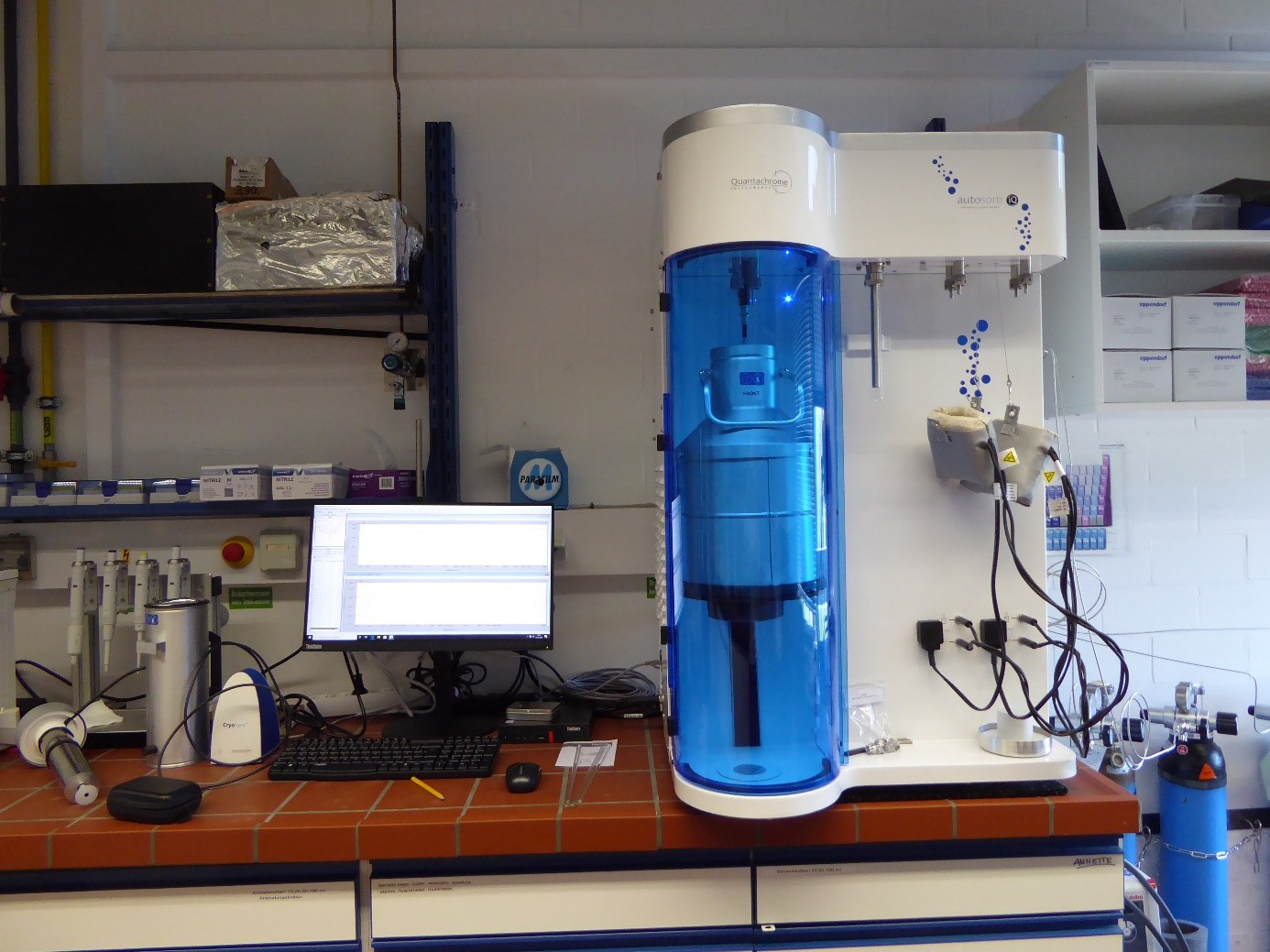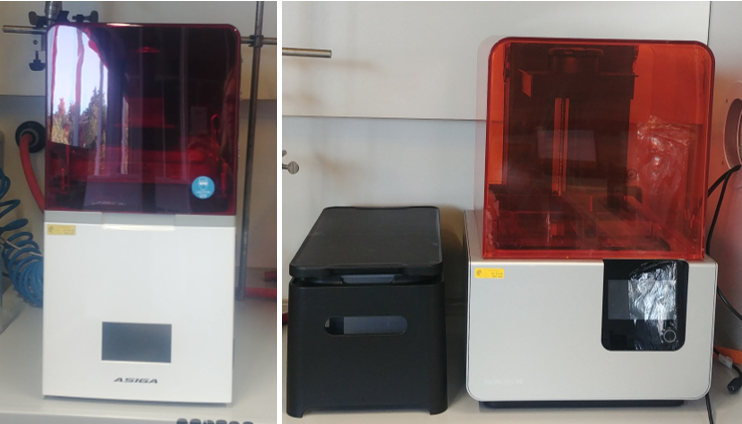Autolab LED-photobank
Comprising of 11 LED sources with emission wavelengths from the near-UV to near-IR wavelength regime for recording so-called action plots [1] of photoreactive species. Action plots map the wavelength-dependent reactivity of photoreactive species which is often red-shifted against the analyte’s UV/Vis extinction spectrum. Typical analytes in our working group involve photocatalysts or photoiniferters as utilized for PET-RAFT or PI-RAFT polymerization.
Setup inspired by S. L. Walden, H. Frisch, B. V. Unterreiner, A.-N. Unterreiner, C. Barner-Kowollik, J. Chem. Educ., 2020, 97, 543–548 and I. M. Irshadeen, S. L. Walden, M. Wegener, V. X. Truong, H. Frisch, J. P. Blinco, C. Barner-Kowollik, J. Am. Chem. Soc., 2021, 143, 21113–21126.


Autosorb iQ
With the Autosorb iQ from Quantachrom surface areas, pore size and pore size distributions can be analyzed. We have two fully equipped measuring stations and we can measure with nitrogen, argon and krypton. This also allows a micropore analysis and the examination of small sample occurrences. Additionally, we have a CyroSync which allows measurements at 87 K. In addition to gas absorption, our device also has a vapor option. This allows us to analyze the wetting of materials more precisely. We also have the latest DFT kernels at our disposal for the evaluation of the measurement data.
Responsible: Nikita Jha
CO2 Plasma generator
The CO2-plasma-generator Diener Electronic 20 Femto is used to remove organic molecules from the surface of an assay so that the functionalization only remains within the pores.
Responsible: Lisa Balonier


Drying oven
In our working group we use the drying oven for the removal of organic template molecules (e.g. after dipcoating) and to create porous films.
Electro chemistry
The two potentiostats Autolab PGSTAT302N and PGSTAT204 by Metrohm are used to investigate the ionic transport in porous films by cyclic voltammetry and for impedance measurements.
Responsible: Lisa Balonier


Ellipsometer
Spectroscopic Ellipsometer M-2000® with Auto-Angle ESM-300 Base (CompeteEASE® Software) including 5 mL horizontal liquid cell (RC®), 500 µL variable temperature liquid cell and environmental cell for surface analytics.
Responsible: Michael Zoppelt
Evaporator system
The CREAMET 300 V2 is used to create a thick metal layer up to 5μm on surfaces via thermal evaporation.
Responsible: Michael Zoppelt

IR-spectrometer
PerkinElmer Spectrum Two FT-IR-spectrometer using Software SPectrum by PerkinElmer.
Responsible: Marion Trautmann
LED Cube 100IC
LED Cube 100 IC from Hönle UV technology with 405 nm and 385 nm LED. Chamber dimensions are 180 mm in width and depth, 190 mm in height. The distance of a sample from the LED can be adjusted using a small scissor lifting table.

Nanofiltration device
The Poseidon nanofiltration device from Convergence can be used to investigate questions of membrane permselectivity, permeability and fouling.
Responsible: Surya Suresh Puthenpurackal
SLA 3D-printer
Using the Formlabs Form 2 or Asiga MAX X27 UV 3-D printer objects out of ceramic or clear polymer can be produced via stereolithography thechnology.
Responsible: Surya Suresh Puthenpurackal


Synthesis lab
Nanopore functionalization and polymer synthesis is carried out in our fully equipped synthesis labs.
Thin film preparation
To create thin films the climate chamber Memmert GmbH & Co. KG (Typ ICH260L) is used. Due to its constant conditions thin films can be created reproducible.
Responsible: Michael Zoppelt


Total Internal Reflection Fluorescence (TIRF) Mikroscope
The Nikon Inverted Research Microscope ECLIPSE Ti2-E/Ti2-E/B can be used to generate an “evanescent electric field” from 100 to 200 nm from the coverslip. The possible laser wavelengths are 405 nm, 488 nm and 638 nm.
Responsible: Paersis Weslie, Tobias Hoffmann, Marius Kirsch
UV/Vis-spectrometer
Agylient Cary 60 UV/Vis spectometer using Software Cary WinUV program (version 5.0.0.999).
Responsible: Surya Suresh Puthenpurackal
